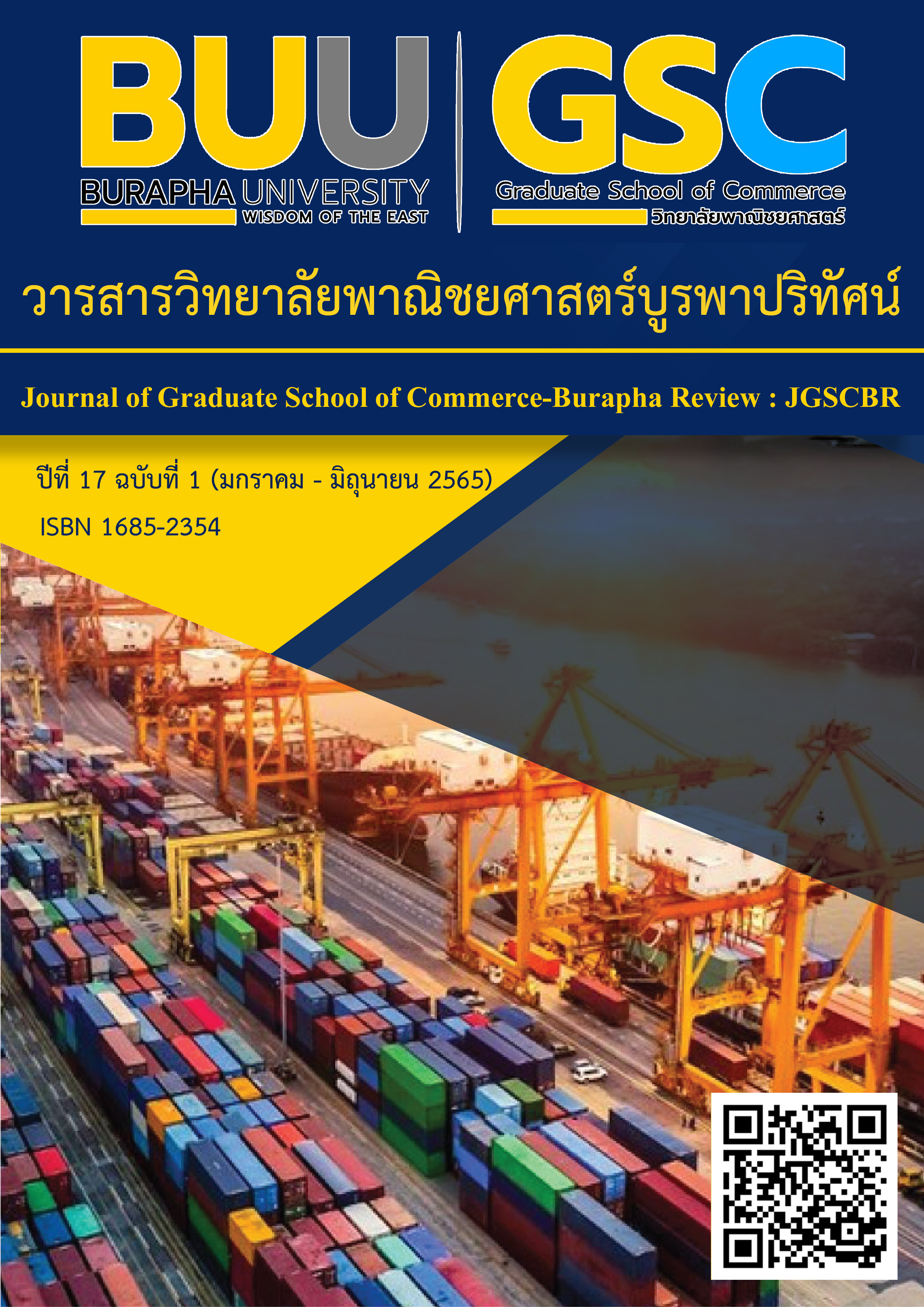TECHNOLOGY ACCEPTANCE FACTOR AND NETWORK EXTERNALITY FACTOR AFFECTING E-WALLET USAGE BEHAVIOR
Main Article Content
Abstract
The purposes of this study were to determine factors affecting e-wallet usage behavior and to compare the level of acceptance of e-wallet technology. The research's conceptual framework was based on the theory Reason Action, theory of planned behavior, technology acceptance model, and network externalities. The data were collected from 420 e-wallet customers via online questionnaires using the stratified sampling method and analyzed using the structural equation model.
The findings revealed that factors affecting the e-wallet usage behavior of customers were perceived ease of use, perceived number of peers, perceived complement, perceived usefulness, subjective norm, and behavioral intention. Customers under the age of 25 years old, bachelor's degree, student occupation, and level of income not more than 15,000 baht have higher levels of technology acceptance than those of other groups.
Keywords:
Article Details

This work is licensed under a Creative Commons Attribution-NonCommercial-NoDerivatives 4.0 International License.
The owner of the article does not copy or violate any of its copyright. If any copyright infringement occurs or prosecution, in any case, the Editorial Board is not involved in all the rights to the owner of the article to be performed.
References
สำนักงานสถิติแห่งชาติ. (2563). รายงานการสำรวจการใช้เทคโนโลยีสารสนเทศและการสื่อสารในครัวเรือน พ.ศ. 2562. สืบค้นจาก www.nso.go.th.
Ajzen, I. (1985). From Intentions to Actions: A Theory of Planned Behavior. In J. K. Beckmann, Action Control (pp. 11-39). Springer, Berlin, Heidelberg: SSSP Springer Series in Social Psychology. doi:10.1007/978-3-642-69746-3_2
Chua, C.-J., Lim, C.-S., & Aye, A. K. (2020). Consumers’ behavioral intention to accept of the mobile wallet in Malaysia. Journal of Southwest Jiaotong University, 55(1), 1-13.
Davis, F. D. (1986). A technology acceptance model for empirically testing new end-user information systems: Theory and results. Doctoral Dissertation. Sloan School of Management, Massachusetts Institute of Technology.
Lai, P. C. (2018). Security as an Extension to TAM Model: Consumers’ Intention to Use A Single Platform E-Payment. Asia-Pacific Journal of Management Research and Innovation, 13 (3-4), 110-119.
Lee, S.-G., Trimi, S., & Yang, C.-G. (2017). Perceived Usefulness Factors of Online Reviews: A Study of Amazon.com. Journal of Computer Information Systems, 58(4), 344–352.
Patil, P., Tamilmani, K., Rana, N. P., & Raghavan, V. (2020). Understanding consumer adoption of mobile payment in India: Extending Meta-UTAUT model with personal innovativeness, anxiety, trust, and grievance redress. International Journal of Information Management, 54, 1-16.
Scheper, H., Derogee, R., Mahdad, R., van der Wal, R. J., Nelissen, R. G., Visser, L. G., & De Boer, M. G. (2019). A mobile app for postoperative wound care after arthroplasty: ease of use and perceived usefulness. International Journal of Medical Informatics, 129,75-80.
Taufik, N., & Hanafiah, M. H. (2019). Airport passengers’ adoption behaviour towards self-check-in kiosk services: The roles of perceived ease of use, perceived usefulness and need for human interaction. Heliyon, 5(12), 1-9.
Wang, Y., Yang, Y., Wang, J., Douglas, M., & Su, D. (2021). Examining the influence of social norms on orderly parking behavior of dockless bike-sharing users. Transportation Research Part A: Policy and Practice, 147, 284–296.


